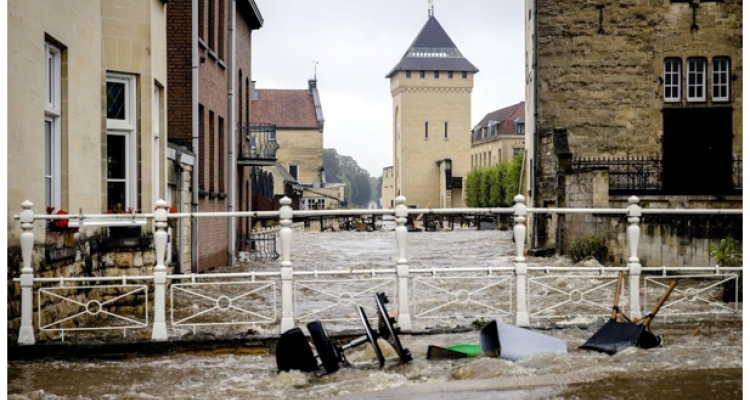
Colloquium
An indicator based approach to quantify river flood risk for the Maas river in Limburg - combining hazard, vulnerability, and exposure
Abstract
Traditional Dutch flood risk management (FRM) policies are mainly oriented towards building flood protection systems and disaster prevention. Over the last decade, a paradigm shift in risk management has emphasized the need for incorporating a so-called social dimension of risk, whereby building sustainable disaster risk reduction (DRR) policy through adaptation strategies is deemed equally important.
Risk assessments are a key practice in building effective DRR strategies, since they have the potential to identify places of high risk, and to anticipate places that would benefit most from FRM policy implementations. As such, risk assessments require to incorporate this social dimension of risk to create holistic assessments. This thesis addresses the need for such an integrated framework to assess river flood risk, incorporating both its technical and social dimensions. The assessment framework is then applied to a region susceptible to river floodings from the Maas river in the Dutch province of Limburg. The goal of this thesis is to enhance understanding of risk, and to support decision-making processes for planners and experts in the field of FRM.
The study creates a novel risk assessment framework, whereby the main risk components of vulnerability, exposure, and hazard are quantified and combined into a single risk index. Socio-economic, and physical community characteristics are assessed to identify the main drivers of vulnerability among flood affected populations. Assets at risk are analysed to determine flood exposure levels. Hydrological models simulating flood events are used to quantify flood hazard levels.
Results show considerable heterogeneity of risk areas within the study area. Risk is progressively concentrated within urban areas, particularly in the south of Limburg, near Maastricht, and areas around the Geul and Geleenbeek tributary, due to the combination of steep terrain, and vulnerable socio-economic population characteristics.
The findings of the study provide valuable insights into the spatial distribution and drivers of flood risk along the Maas river and its tributaries. By identifying high-risk areas and vulnerable populations, the integrated risk assessment framework facilitates the development of targeted mitigation and adaptation strategies to enhance resilience to river flood disasters, guiding stakeholders and decision-makers towards effective and sustainable DRR strategies while considering strengths and weaknesses of local populations.